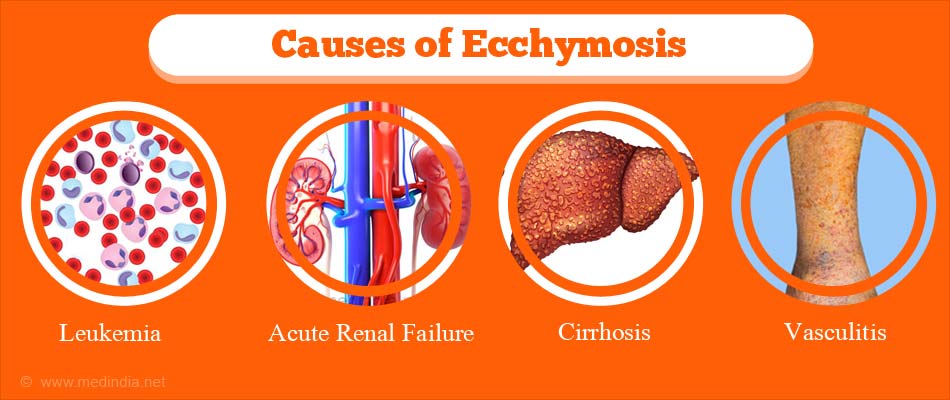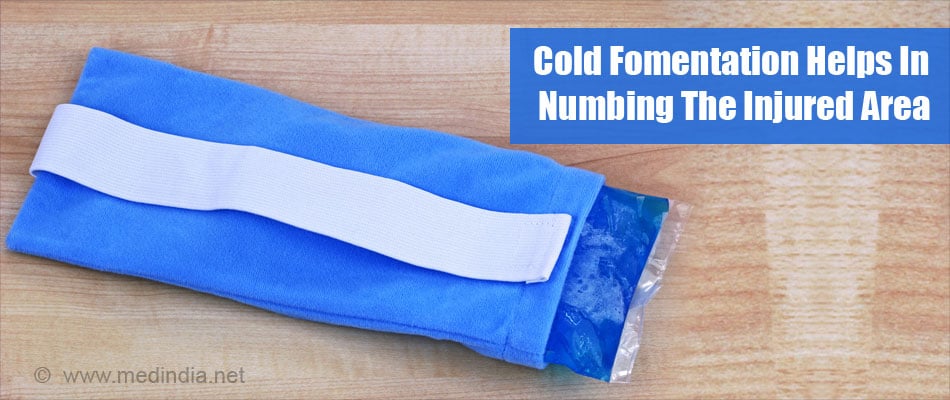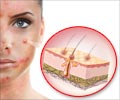- Ecchymosis - (https://en.wikipedia.org/wiki/ecchymosis)
- A Randomized, Controlled Comparison between Arnica and Steroids in the Management of Post rhinoplasty Ecchymosis and Edema - (http://journals.lww.com/plasreconsurg/abstract/2007/07000/a_randomized,_controlled_comparison_between_arnica.39.aspx)
- Treatment of Ecchymosis - (https://www.ncbi.nlm.nih.gov/pmc/articles/pmc2989814/)
- Blepharohaematoma or Racoon eyes - (https://www.ncbi.nlm.nih.gov/pubmed/28611566)
- Ecchymosis Causes - (https://medlineplus.gov/ency/article/003235.htm)
What is Ecchymosis?
Ecchymosis is the discoloration of the skin, due to blood leaking out of vessels into the underlying subcutaneous tissues (extravasation). It is also called bleeding under the skin in simple terms and is different from a hematoma or a bruise due to its usually flat appearance. Also, unlike bruises, ecchymosis is not necessarily caused by trauma and can be caused by a pathophysiologic cell function. The spots in ecchymosis are larger than 10 millimeters in diameter. Its size differentiates it from two other kinds of bleeding, namely petechiae (less than 2 millimeters in diameter) and purpura (2 millimeters to 1 centimeter in diameter).Ecchymosis also has a more diffuse border than other purpura.
What are the Causes of Ecchymosis?
Ecchymosis has two types of causes:
1. Underlying disease conditions – multiple disease conditions can result in ecchymosis:
- Aplastic anemia
- Leukemia
- Acute renal failure
- Cirrhosis
- Endocarditis
- SLE
- Vitamin K deficiency resulting in coagulation disorder or hemophilia
- Liver disorders
- Thrombocytopenia
- Vasculitis

2. Trauma is a secondary and not so common cause of ecchymosis. A blunt injury or sudden forceful or excess pressure on any part of the body and underlying tissues like asphyxiation or even fractures causing rupturing of minor blood vessels and capillaries of the affected and surrounding areas can cause ecchymosis. This results in the leakage of blood into the underlying skin and mucus membrane and appears as a bluish discoloration on the surface of the skin.
Frequent bruising of the skin for no reason requires a mandatory health check up to reveal any underlying diseased conditions which might be life threatening, for example, Marburg virus disease (a viral hemorrhagic fever that affects humans and non-human primates).
What are the Types of Ecchymosis?
Signs of Ecchymosis depend on the part affected -
- Eyes: Raccoon eyes or periorbital ecchymosis – resulting from contusion or blunt injury to the frontal skull or basal skull fracture or even eye injury; raccoon eyes are associated with swelling and tenderness; this condition is also referred to as black eye.
- Mastoid region: Battle’s sign or mastoid ecchymosis – bruising over the mastoid process due to the basal skull fracture; it may suggest underlying brain trauma.
- Umbilical region: Cullen’s sign – bruising in the subcutaneous fatty tissue around the umbilicus and is due to disorders like liver cirrhosis, or ruptured cyst.
- Lateral Abdominal wall: Grey Turner’s sign – bruising of the flanks, the part of the body between the last rib and the top of the hip and is due to a ruptured abdominal aneurysm, rupture of spleen, intrauterine pregnancy or bilateral salpingitis.
- Lower abdomen: Seat belt sign – presence of bruising in the distribution of a seatbelt across the abdomen, chest and sometimes neck resulting from a motor vehicle accident.
- Inguino Pubic area: Bryant's sign (scrotal ecchymosis) and Stabler's sign (inguinal ecchymosis) due to ruptured ectopic pregnancy, or ruptured abdominal aneurysm.
What are the Symptoms of Ecchymosis?
Ecchymosis is both a sign and a condition; symptoms are -
- Occurs only in the thin layer of the skin
- Has a flat appearance
- Bluish or purplish discoloration of the skin 10 millimeters or 1 centimeter or larger
- Occasional pain at the site
- Occasional inflammation and tenderness of the skin surrounding the site
- Other symptoms characteristic of the medical conditions that cause ecchymosis
How do you Diagnose Ecchymosis?
Ecchymosis can be easily diagnosed as the affected part turns purplish and is swollen and tender. The general physician will confirm the condition after taking the case and examining it. However, the diagnosis does not stop there as your doctor will probe the reasons behind ecchymosis and then proceed to treat you.
What are the Complications of Ecchymosis?
Ecchymosis might not have major complications as it presents itself as a complication of some underlying disease condition like a liver disorder, ectopic pregnancy or trauma. However sometimes it might have some common complications is the area affected is the mucus membrane or skin folds, hence the most common complication of ecchymosis is an infection of the affected area which includes the following symptoms:
- Increased swelling and reddishness of the affected area and the area surrounding it
- Increased pain and tenderness
- Fever and chills
- Pus formation
How do you Treat Ecchymosis?
Ecchymosis is commonly treatable at home; however, if the reason is unknown or not due to injury or trauma then it requires immediate medical attention. It is treated as follows:
- Rest - as it helps in tissue repair and healing especially if it occurs due to trauma and if it is present in a place where the body weight falls frequently on it due to movement, like the lower extremities or the folds of the skin.
- Cold Fomentation - cold fomentation helps in vasoconstriction and aids in numbing the injured area and also prevents the extravasation of blood to spread further into the tissues.

- Medications - medications such as pain killers like Epinephrine (helps in contracting blood vessels when used along with and anesthetic locally) and analgesics like Ibuprofen and local ointments like arnica gels or Vitamin K ointments.
- Casts – If the ecchymosis is due to a fractured bone the bone needs to be surgically treated and put in place with a cast to let it heal completely.
- Treatment of underlying disease - When ecchymosis is caused by a reason other than injury, the underlying condition should be examined carefully and treated by a physician.
- Vitamin supplements - Repeated and easy bruising may be the result of aging or physical abuse or lack of Vitamin K; so a healthy diet rich in vitamin c and k supplements needs to be recommended.
How do you Prevent Ecchymosis?
- Avoid injuries, especially in children
- Take vitamin supplements, especially the aged
- Get checked for blood clotting disorders
- Avoid taking aspirin or anticoagulants for a long period of time
Health Tips:
- Cold fomentation initially for an injury later followed by hot fomentation to help absorption of the blood back into the capillaries
- Intake of Vitamin C rich foods like Kiwi, Pineapple, Papaya
- Intake of greens like spinach and cabbage
- Intake of vitamin K supplement









